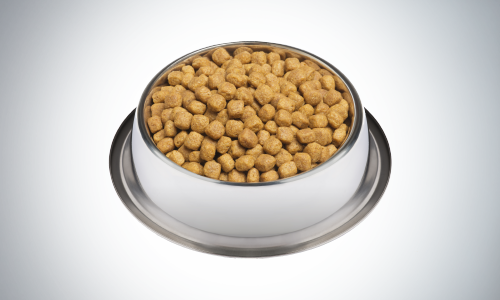Practice Scenario

Meet CHAMP
A 4-year-old, neutered-male, Border Collie
- Champ is at the hospital for a yearly physical examination and vaccinations.
- Described by his owner as an energetic and athletic dog, Champ competes in agility and herding trials. He also “works” on the owner’s hobby farm by helping to move livestock.
- Champ’s owner reports that competition- and travel-related stress sometimes cause Champ to have soft stools. The owner switched Champ to a raw food to address the soft stools, but the switch did not resolve the issue.
Adult Dog
How Do I Choose a Healthy Dog Food?
One of the most important things you can do for your dog’s health is to feed a nutritionally complete and balanced dog food. So how do you choose a healthy dog food that’s right for your dog?
The truth is, there is no one “best dog food” or “healthiest dog food” because different dogs have different nutritional needs.
Instead, you should consider a few key factors when choosing a commercial pet food for your dog.

1. Look for a food formulated for your dog’s age.
Dogs have different nutritional needs at different points in their lives. Feeding a healthy food formulated for your dog’s life stage is an important way to ensure your dog is getting all the nutrients he or she needs.
Actively growing puppies need a food with high-quality protein to help support growing muscles and DHA (docosahexaenoic acid), an essential omega-3 fatty acid important for developing brains and vision. Older dogs may benefit from a senior formula with fewer calories to help maintain ideal body condition and ingredients meant to support their aging joints.
2. Consider a food formulated for your dog’s size.
Some dogs do better on a diet formulated specifically for their size. While it may seem counterintuitive, large and giant breed dogs need a dog food that is less concentrated in calories than food specifically formulated for toy and small dogs. Large breed dogs have relatively slower metabolic rates, which means they need fewer calories per kilogram (pound) of body weight. Large and giant breed dogs also may benefit from dog food made with ingredients that help support joint health, such as omega-3 fatty acids from fish oil or glucosamine from some meat and poultry ingredients.
Toy and small breed dogs need high-quality, calorie- and nutrient-dense food to match their higher metabolic rates and smaller stomachs. A small or toy breed dog also may find smaller kibbles easier to chew.
Be sure to look on the package for designations such as “large breed” or “small and mini.”
3. Think about your dog’s activity level.
A dog who works or competes is going to burn more calories than a dog whose only exercise is an occasional walk. If your dog is an athlete, he or she may benefit from a nutrient-dense dog food formulated for athletic dogs. On the other hand, if your dog doesn’t get much exercise, you may want to consider a dog food for weight management to help maintain ideal body condition.
4. Pay attention to your dog’s specific nutritional needs and health issues.
Does your dog have a food preference or a condition like sensitive skin? You may want to consider a food formulated for his specific nutritional needs. Targeted nutrition can help support your dog’s condition.
Do not forget to talk with your veterinarian and veterinary health care team.
Choosing the right dog food for your dog does not have to be overwhelming, stressful or confusing. Your veterinarian can help guide your decision based on your pet’s needs and health, so be sure to discuss what you are feeding and any concerns you have with your veterinarian or other members of the veterinary health care team.
